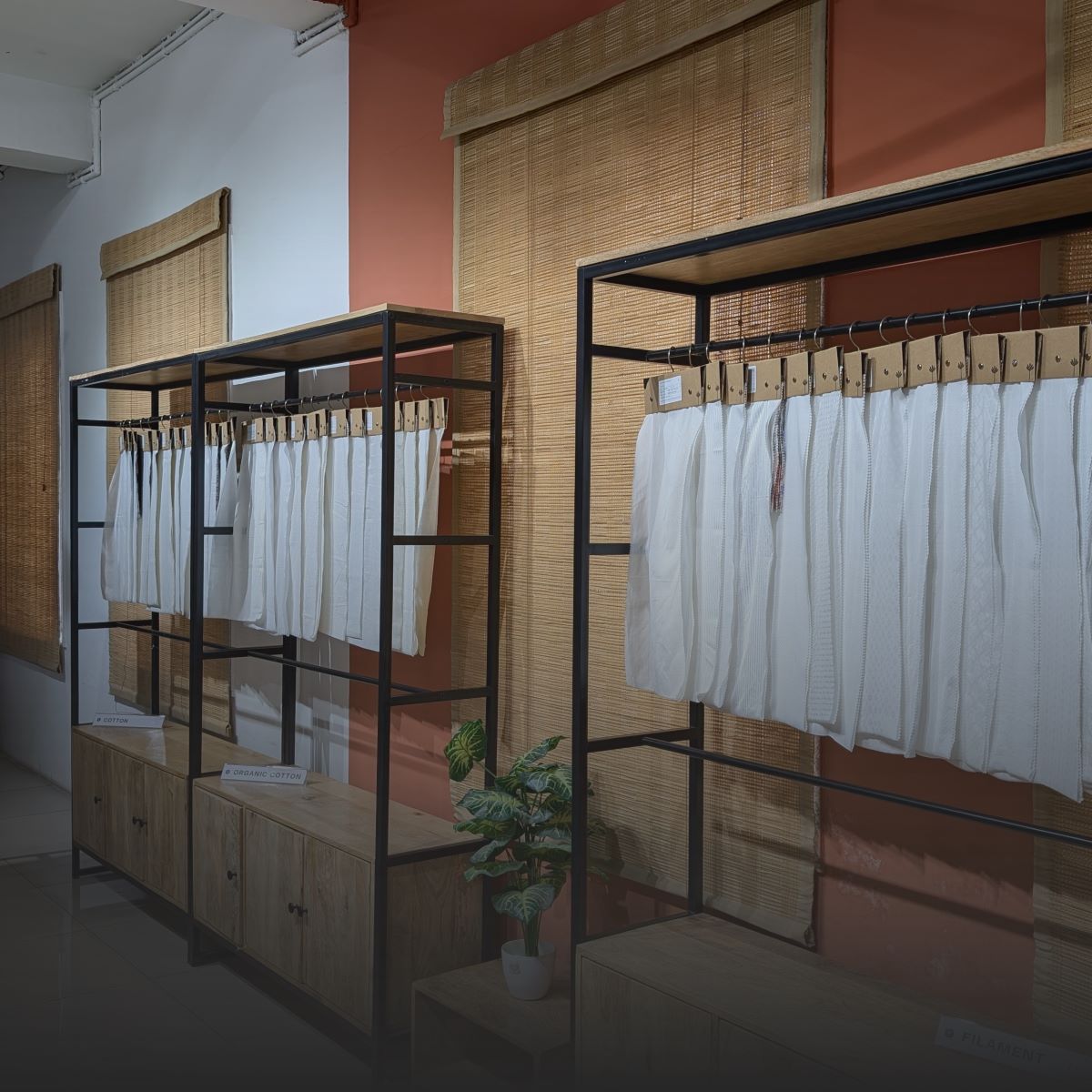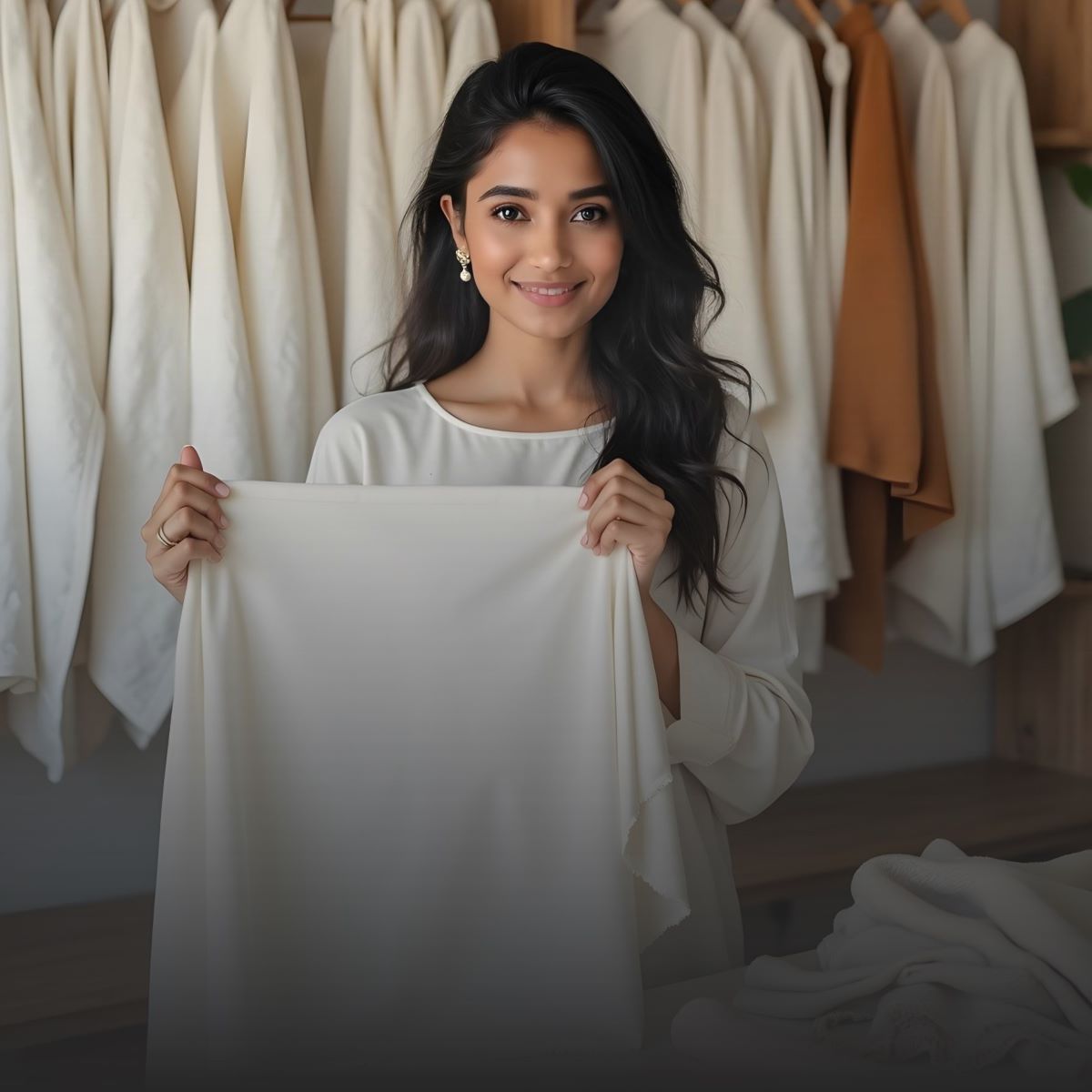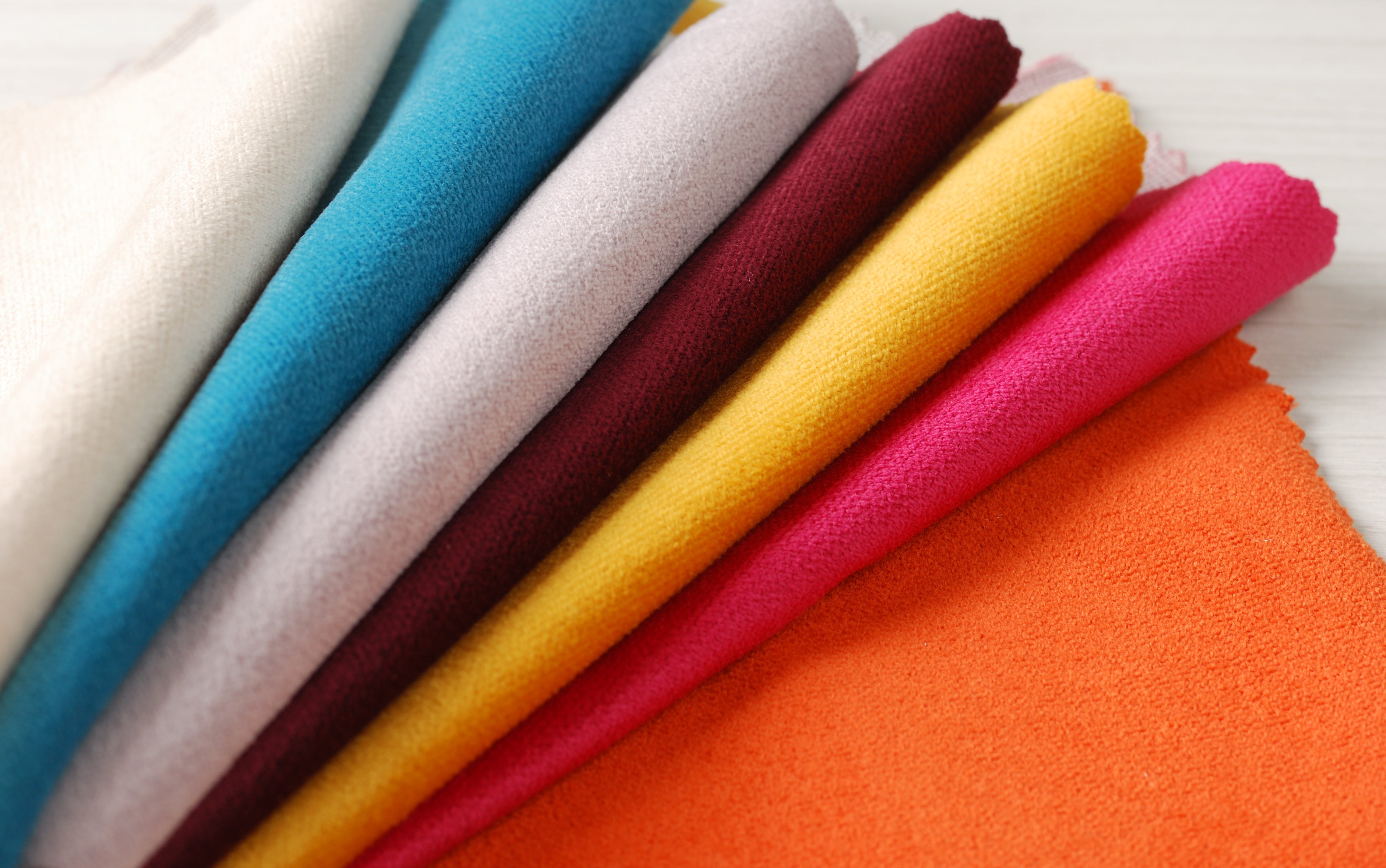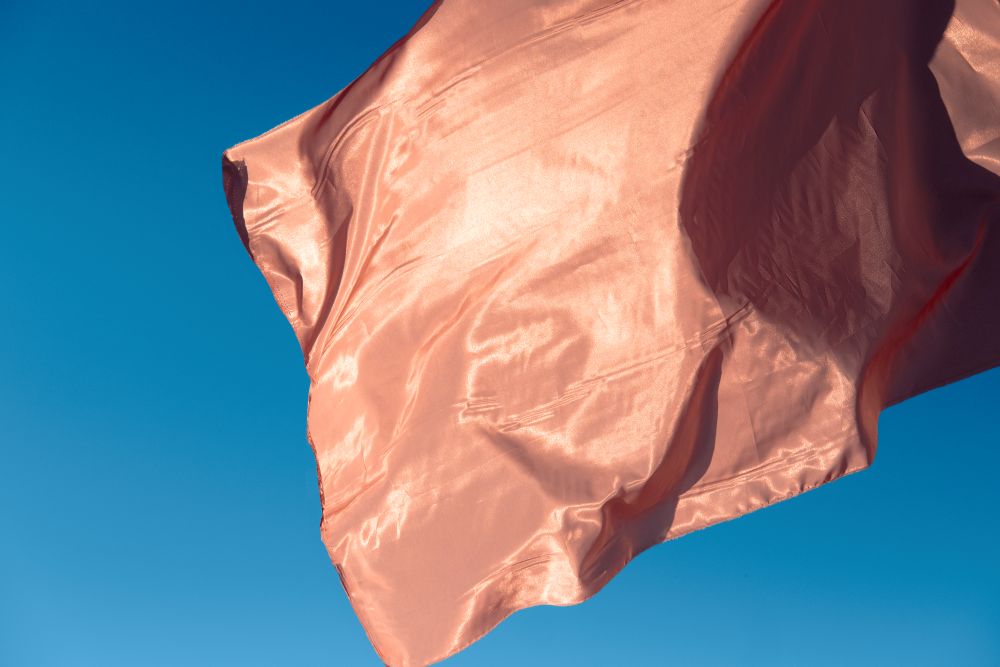One of the most exciting things you can do in today's booming fashion e-commerce market is to open an online store selling women's shirts. Your choice of fabric affects everything, from price and comfort to quality and the long-term identity of your brand. This is true whether you're starting a private label brand, a boutique line, or a sustainable fashion store.
This complete guide will discuss the best fabrics for women's shirts that work well across a range of styles and climates, as well as how easy it is to find them through low-MOQ garment manufacturing in India. You'll also learn how to ensure your sourcing strategy aligns with global fashion trends, helping your brand stand out in the online market.
Why Fabric Selection is Crucial for Women’s Shirt Brands
Fabric is what your product is made of. It affects how your shirt fits, looks, feels, and works over time. When you're selling women's shirts in the US, UK, Europe, the Middle East, and Australia, the right fabric enhances both aesthetic appeal and functionality.
Selecting high-quality fabrics that can be used in many ways gives your brand an edge by:
- Making collections for your online store that look high-end.
- To make the cu stomer happier by making things more comfortable and long-lasting.
- Providing it is easy to scale up for large-scale production.
- Backing up stories about sustainability and ethical sourcing.
Top Fabrics for Women’s Shirts — Complete Breakdown
Fabriclore's garment manufacturing data shows that Cotton, Linen, Viscose, LivaTM / LENZINGTM, Silk / Satin, Polyester Blends, Lyocell / TencelTM, and Chambray / Denim are the most popular shirt fabrics for women right now.
Let's look at each one in more depth, talking about their special qualities, best uses, and where to get them.
1. Cotton – The Evergreen Choice for Everyday Comfort
Best For: Casual shirts, office wear, summer collections
Recommended Weaves: Poplin, Oxford, Voile, Cambric, Lawn
Cotton is still the most popular and useful fabric for women's shirts. It's light, airy, and easy to dye, making it excellent for both solids and prints.
Why it's a top choice:
- It is hypoallergenic, soft on the skin, and naturally airy.
- Works in all seasons and places.
- Great for brands that focus on everyday wear and comfort.
Pro tip: If you want to sell to eco-conscious customers, choose organic or BCI-certified cotton.
2. Linen – The Natural Luxury Fabric
Best For: Resort shirts, summer collections, premium labels
Recommended Blends: Linen-cotton, Linen-viscose
Linen is naturally beautiful and long-lasting. It's perfect for brands that want a natural fabric that breathes well and has a classy look.
Why it's trending globally:
- Very breathable and good at wicking away moisture.
- Every time you wash it, it changes its texture.
- Perfect for labels with a simple, high-end, or vacation-themed look.
Style Tip: Use washed linen for a modern look and a loose drape.

3. Viscose – The Fluid, Fashion-Forward Choice
Best For: Blouses, wrap shirts, feminine silhouettes
Fabric Variants: Rayon, Crepe viscose, Modal viscose
The smooth drape and silk-like feel of viscose have made it a favorite for women's clothing. It goes well with other fibers and provides a balance of comfort and elegance.
Why brands love viscose:
- Soft, shiny, and lightweight.
- Drapes well for chic designs.
- Ideal for prints, tropical motifs, and digital designs.
4. Liva™ & LENZING™ Modal – Sustainable Fluid Fashion
Best For: Premium blouses, shirts, and flowy tops
Eco-Fiber Category: Regenerated cellulosic fibers
LivaTM (by Birla Cellulose) and LENZINGTM (Modal, EcoVeroTM, TencelTM) are changing the way sustainable fashion is made. These fabrics are buttery soft, highly breathable, and made in a way that doesn't harm the environment.
Why choose Liva™ or LENZING™:
- Forest-friendly wood pulp was used to make it.
- Biodegradable and approved as eco-friendly.
- Offers high-end drapes that look like silk.
5. Silk & Satin – For Elegant, Dressy Shirts
Best For: Evening shirts, luxury collections, festive wear
Common Types: Silk satin, Crepe satin, Polyester satin
Silk and satin women's shirts have a shine, sophistication, and sensuality. They work great for premium online brands that sell to high-end consumers and modern professionals.
Why it's loved:
- It feels silky smooth and has a natural shine.
- Great for structured or draped silhouettes.
- It comes in both natural and vegan silk types.
6. Polyester & Performance Blends – Affordable & Durable
Best For: Office shirts, uniform wear, travel-friendly collections
Standard Blends: Poly-cotton, Poly-viscose, Poly-spandex
Polyester blends make shirts less likely to wrinkle, last longer, and be easier to clean. They are great for fast-fashion or workwear brands.
Why it's practical:
- Easy to take care of and dries quickly.
- Cost-effective for making many things.
- With advanced weaving, it can look like it is made of cotton, silk, or satin.
7. Lyocell / Tencel™ – The New-Age Eco Luxe Fabric
Best For: Premium casuals, sustainable collections, and ethical brands
Key Properties: Silky soft, moisture-absorbent, biodegradable
TencelTM, a Lyocell brand from Lenzing, is both eco-friendly and high-end. Modern D2C brands like it more and more because it feels soft in the hand and doesn't hurt the environment much.
Benefits:
- Naturally wrinkle-resistant.
- Gentle on skin and 100% biodegradable.
- Blends beautifully with cotton, viscose, or linen.
8. Chambray & Denim – The Casual Cool Classics
Best For: Utility shirts, denim shirts, casual workwear
Weights: 4 oz to 8 oz (lightweight Chambray to midweight denim)
Jeans shirts are always in style. Chambray is light and comfortable, but it has a denim-like look. It's great for casual and all-season collections.

Why you need it:
- Long-lasting and valuable.
- It can be used for both traditional and experimental designs.
- Great for layering or wearing on its own.
Color & Texture Trends for Women's Shirts
Comfort, sustainability, and timeless aesthetics have a significant impact on color schemes and textures in the year 2025.
Top Fabric Trends:
- Soft pastels: Lilac, mint, blush, and sand tones.
- Earthy neutrals: Beige, oatmeal, taupe, and terracotta.
- Rich solids: Emerald, cobalt, wine, and black.
- Textures: Crinkled cotton, washed linen, satin gloss, and matte crepe.
Fabriclore offers 100+ solid bases and 5,000+ color combinations, making it easy and quick for brands to create seasonal collections that look good together.
Choosing the Right Fabric for Your Brand Type
|
Brand Type |
Recommended Fabrics |
Collection Tip |
|
Casualwear Label |
Cotton, Linen, Viscose |
Focus on breathable, low-maintenance weaves. |
|
Luxury / Premium Brand |
Silk, Satin, Liva™, Tencel™ |
Highlight smooth drapes and premium textures. |
|
Eco-conscious Brand |
Organic Cotton, Linen, Lyocell |
Emphasize sustainability certifications. |
|
Officewear Brand |
Poplin, Polyester blends, Crepe |
Opt for wrinkle-free, structured fabrics. |
|
Resortwear / Holiday Brand |
Linen blends, Viscose prints, Chambray |
Keep fabrics airy, colorful, and lightweight. |
Low MOQ Fabric Sourcing & Sampling Support
Starting a women's shirt brand doesn't require much money up front. Fabriclore works with both new and established brands and offers a low MOQ (Minimum Order Quantity) of 100 meters per design. This makes it perfect for small orders, capsule collections, or online drops.
Advantages:
- 100+ fabric bases ready for sampling.
- Order small lots in 15 days.
- Get digital swatches and print mockups before production.
- Scale up with consistent dye lots and bulk pricing.
Fabric Weight Guide: From Lightweight to Heavy
Check GSM in the table below because; Picking the right GSM will make sure that your shirts breathe well, fall right, and last a long time.
|
Fabric Weight |
Ideal Use |
Example Fabrics |
|
Lightweight (80–120 GSM) |
Summer shirts, layering tops |
Cotton voile, Poplin, Crepe, Viscose |
|
Medium weight (120–180 GSM) |
All-season shirts |
Oxford, Linen, Chambray |
|
Heavy weight (180–250 GSM) |
Structured shirts, overshirts |
Denim, Twill, Gabardine |
Building an Online Women’s Shirt Brand: Key Considerations
Strategic sourcing, storytelling, and user experience are also crucial for success, along with choosing the right fabric.
1. Define Your Brand Identity
Are you aiming for casuals who care about comfort, high-end minimalist shirts, or people who care about sustainable fashion? Your main message should come through in the fabric and style you choose.
2. Invest in Quality Imagery
Use close-up photos or short videos to show off the texture, drape, and sheen. When people shop, they use their eyes.
3. Highlight Transparency
Talk about where the fabric comes from, how long it will last, and any certifications it has. These details help people around the world trust you.
4. Offer Customization
Fabriclore lets you create your own prints, dyes, and finishes to build signature collections for your brand.
5. Optimize Your Website for Search
Use product titles optimized for SEO, detailed fabric descriptions, and semantic keywords such as "buy sustainable linen shirts," "women's poplin shirts online," "Tencel blouse fabric wholesale," and so on.

The Future of Women's Shirt Fabrics: Tech-Enabled Sourcing
Tech-driven sourcing is used by global brands today to reduce lead times, ensure quality standards are met, and track sustainability metrics.
Fabriclore's digital fabric sourcing platform gives fashion business owners an edge by:
- Real-time fabric inventory across verified Indian mills.
- Custom fabric development with digital design previews.
- Transparent pricing and compliance tracking.
- Integrated sampling-to-production workflow.
With this seamless system, even small labels can operate like big brands, since they can handle everything through a single channel —from fabric selection to garment finishing.
Quick Recap: How to Choose Fabrics for Your Women's Shirt Store
- Focus on comfort and purpose – Choose breathable cottons and linens for everyday wear; silk, satin, or Tencel for premium looks.
- Experiment with blends – Combining natural and synthetic fibers can enhance performance.
- Keep MOQ flexible – Start small, test demand, and scale with data.
- Embrace sustainability – Certified eco-fabrics appeal to global buyers.
- Stay updated with trends – Incorporate seasonal shades and textures.
Start Your Journey with Fabriclore
Fabriclore helps both new and established women's shirt brands source globally competitive fabrics directly from India. You'll get the following, whether you're making a capsule collection or a full-scale private label:
- Low MOQ starting at 100 meters per design
- 100+ base fabrics and 5000+ color combinations
- Sampling in 15 days
- Seamless sourcing, quality checks, and export support
Start your brand with confidence.
Through Fabriclore's digital sourcing platform, you can look at fabrics made for women's shirts made of Cotton, Linen, Viscose, TencelTM, Satin, and more.
Final Thoughts
Your women's shirt online store will do well if it has the right fabric story —one that combines comfort, innovation, and sustainability.
When you choose fabrics that align with your brand's personality and the people you want to sell to, you not only make stylish clothes but also build long-term customer loyalty and strengthen your brand's credibility worldwide.
Whether you want luxury silk blouses, breathable cotton shirts, or eco-friendly Tencel collections, the person you work with to find them can make all the difference.
With Fabriclore: Your International Garment Manufacturing Partner from India, you can get off to a good start, be honest about your sources, and make a women's shirt brand that people all over the world will love.
FAQ's
1. Which Fabrics Are Best For Selling Women's Shirts Online (Comfortable, Durable, And Easy To Care For)?
Answer: Cotton (poplin, Oxford), linen blends, viscose, and TencelTM/Lyocell should be at the top of the list for an online women's shirt store because they are comfortable, long-lasting, and easy to care for. For everyday shirts that don't need much care, use cotton and poly-blends. For soft drape and a high-end feel, use viscose and TencelTM, and for resort and summer wear that needs to breathe, use linen blends.
2. What Minimum Order Quantity (MOQ) Should Small Brands Expect When Sourcing Fabric For Women's Shirts?
Answer: Many suppliers who use technology now offer low MOQs starting around 100 meters per design, which is great for small batches and launches. This keeps costs low and lets small brands test designs and colourways before making many.
3. How Do I Choose The Right Fabric Weight (Gsm) For Different Women's Shirt Styles?
Answer: What GSM should you use? 80–120 GSM is suitable for light blouses and summer shirts made of voile or crepe; 120–180 GSM is ideal for all-season shirts made of poplin or Chambray; and 180–250 GSM is good for structured overshirts or denim. Choosing the right GSM ensures each silhouette gets the right drape, comfort, and durability.
4. Which Sustainable Fabrics Should I Promote To Attract Eco-Conscious Customers?
Answer: Include certified viscose, organic cotton, linen, Lyocell/TencelTM, LivaTM/Modal, and Lyocell/TencelTM. These materials are known to be better for the environment and can be broken down naturally. To build trust with buyers who care about the environment, put certifications, clear care instructions, and information about the supply chain at the top of product pages.
5. How Should I Write Product Pages For Women's Shirts To Improve Seo And Conversions?
Answer: Use product titles that are full of keywords, like Women's Linen Resort Shirt—Breathable Washed Linen, short descriptions of the fabric and how to care for it, hero images that show texture and drip, and semantic copy that answers buyer questions about fit, GSM, origin, and sustainability. To increase the frequency of purchase-intent search queries, add long-tail phrases, size guides, and technical specs (GSM, composition).
We also happen to be a magnet for suggestions, and would love to catch yours….throw us yours on hello@fabriclore.com
Also Read Related Blogs:
1. Starting Your Clothing Brand and Need 10+ Shades of Solid Color Fabrics for Shirts?
2. How to Start a Clothing Business in the UK (2025)
3. How to Start a Clothing Business in the United Arab Emirates (UAE) (2025)
4. How to Start a Profitable Fashion Business in Australia (2025): A Step-by-Step Guide




